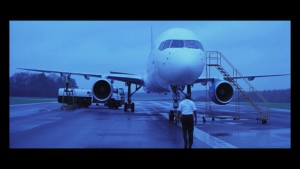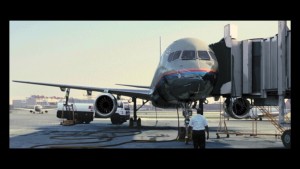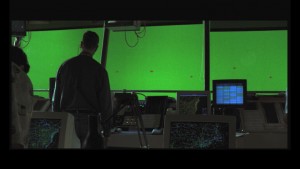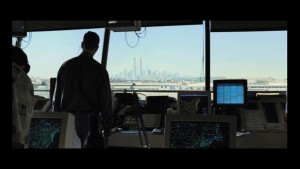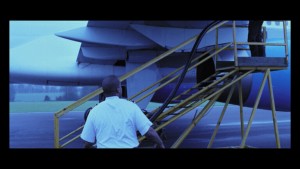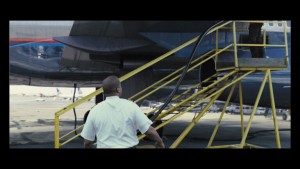Rarely is a vfx team called upon to so faithfully recreate something so significant to so many people, and so vividly recalled by so many of the film’s audience. United flight 93 was hand crafted back to life by the team at Double Negative in London.
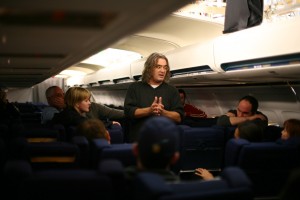
Universal Pictures and Working Title films recently released United 93, the story of the fourth plane to be hijacked on September 11, 2001. Double Negative, one of the UK’s fastest growing VFX house, was chosen to help realize director Paul Greengrass’ vision of the tragic events.
Double Negative, (Harry Potter and the Goblet of Fire and Batman Begins, were in charge of 483 shots for the project and these were completed in just six weeks. Five other key effects companies also contributed to the project, including Framestore CFC, BUF, Baseblack and LipSync . The incredibly short deadline required meticulous planning at every stage and a highly efficient working pipeline to deal with the logistics of the massive workload and a constantly evolving film that was still being edited until the final days of the schedule. Matt Plummer, Double Negative’s VFX producer, said, “In the VFX industry we are all used to working to short deadlines – but a six week turnaround for this standard of creativity is a fantastic achievement, especially as this was an evolving project with many changes made throughout the post-production schedule.â€Â
Apart from the moral issues, there have been few films that have depicted events so widely known and seen as the events on the 11th of September, 2001.
“Paul (Greengrass) and his team of researchers researched the film maticuously, it had to be exactly as it was on the day, – although we don’t know know the real nature of the events inside the plane”
So the team set out to be as accurate and faithful as they could. The real United 93 flight starts at Newark Airport, an airport that many film audience members would know extremely well. Ironically, it was very difficult for the production to film at Newark Airport, precisely because of 9/11. At the start of the film, the tension builds as United 93’s passengers board the plane and then as it is delayed on the runway. The creation of the runway and exterior environment of Newark Airport made up approximately fifty percent of Double Negative’s work. Since Newark was so restricted the team had to make do with a very limited amount of time, less than a day and the only really usable aspect was a wide panorama of the skyline of NY and the Newark runways. The vista was shot on a film camera and then the team stitched that back together as a 180 degree digi matte painting at Dneg, explains John Moffat, 2D supervisor. The production did also film at Boston and LAX but “of course they look quite different” jokes Moffat. “And then whenever we could get to an airport… we’d shot everything we could so our matte painters would have material for airport buildings, that we’d need for certain shots”. The 180 vista did provide the hero shot of the NY skyline, and they managed to get high enough to match the the control tower.
The rest of the ground shots needed to be filmed in the UK, with the majority of any particular shot being created digitally, from the planes, tarmac and airport buildings, to ground-staff vehicles and distant highway traffic. Double Negative was provided with foreground elements of a plane and ground crew, which was shot on a runway in the English countryside, but even then the English weather was not kind, and the images looked completely nothing like what was needed, both in terms of light and surroundings. Thus the team set to work replacing almost everything but the actors, even this plane had to be replaced with a computer generated United 757. “The plane was quite tricky, …all they got (the 1st unit) was a cargo plane with the cargo company livery on it” comments Rick Leary, CG supervisor. ”
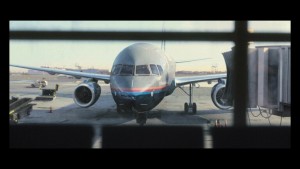
In addition, all the shot elements, which were used from the murky English weather shoot, had to be digitally re-lit or graded to match the brilliant sunshine of September 11. ” It was way out of range, the light was completely flat, the light direction was wrong, colours were completely wrong, our job was to take the elements that were useful, like the co-pilot, the refueling guy and replace the plane and everything else – which was no mean feat as we are quite close to it and so it was a huge model”. explains Leary. The team had to recreate the plane, the tarmac, and almost all the rest of the image. When the images were distant they could use the 180 vista but for anything closer like building that would show parallax, everything had to be redone in 3D. The 3D pipeline on the jetliner, for example, started with a survey, which gave point data, that was then imported into Maya, it was modelled in Maya, texture painting was built on a photographic survey of the plane, this was fed into STIG, internal Dneg software, – this made up “an image about 20,000 lines” explains Leary. This was the basis for the texturing – but final painting was actually done in Photoshop. The rendering was done in Renderman. The team uses its own Renderman tools, rather than MTOR, DNeg has their own propreitary software. The rendering was done with “occulsion passes, reflection passes, – building all the soft lighting, on top of that we’d normally we’d get from on set an HDR multi-stop image of set lighting, but in this case we couldn’t obviously get that so in this case the whole HDR environment was fabricated, it did not exist, we had to make that up – like we did the airport, we made it up and that was a huge painting job in its own right”. The team also had a fresnel pass and other things to build up the metal effects, “we used fresnel fairly liberally, and we added a lot of dirt and scuffs, we bolted on a lot of stuff to make that work” he explains.
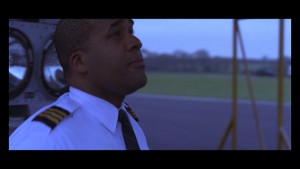
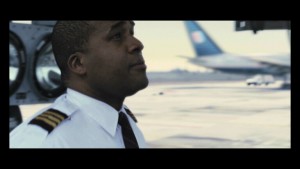
The use of un-known actors, scenes developed through rehearsal rather than scripting, was married with a documentary approach to the filming, the use of handheld cameras and long uninterrupted takes, produces a raw ‘you-are-there’ experience. The shooting style precluded the use of usual VFX techniques of tracking markers and meticulous noting of camera and lens set ups. Double Negative’s CG Supervisor on the film, Rick Leary comments, “There was a complete lack of contrivance in the way the film was shot; they used an improvisational shooting style involving a lot of handheld camerawork on multiple cameras and the visual effects had to link in with that. This made the work more of a challenge than usual, but hopefully the pay-off is that the shots feel very natural.â€
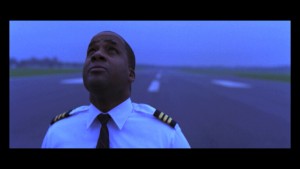
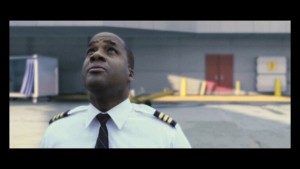
The overall brief for the VFX was that all shots matched the emotional language and feel of the film, and therefore went unnoticed. Matt Plummer adds: “The aim was to make our visual effects contribution to the film completely invisible to the audience. This film isn’t about visual spectacle, and our job as VFX artists was to do all we could to maintain the integrity of the performances on screen.â€
Once the plane was airborne the bulk of the shots were green-screen window replacements. This work played a crucial role in the storytelling by geographically locating flight 93 throughout the film.
Tracking markers do not work for shots out of windows, since the distances to the ground are always vastly more, so the camera match moving and tracking team had to produce a lot of extremely complex solutions without much data to work on. All of the take off shots for example were CGI and done by hand. And as Moffit expalins ” the whole approach Paul wanted to do was handheld, there were no tracking markers, camera data when we had it was off zoom lens, so it was pretty much impossible to do a boujou track or a PF track.” The matchmoving team just had to hand match extreme camera moves, especially in the cockpit shots which were very tight and handheld. Plus the actual set was a real plane cabin put on a gimbal, “going into the dive at the end, one gimbal flipped over completely, – it was a huge rig” he adds.
As the passengers recognize landmarks that are incongruous with a flight to LA, they realize something is wrong. Then, as they try to take over the plane, the hijackers violently pitch and roll the plane, ultimately, tragically, crashing it into a Pennsylvania field. In order to ensure consistency across shots in this sequence a single CG environment of landscape and cloudscape was created. The landscape was derived from aerial photographs manipulated in Dneg’s proprietary environment tools.  This approach ensured the seamless sense of the plane’s erratic and violent descent in spite of the frenetic camera movement and cutting from shot to shot.   Â

